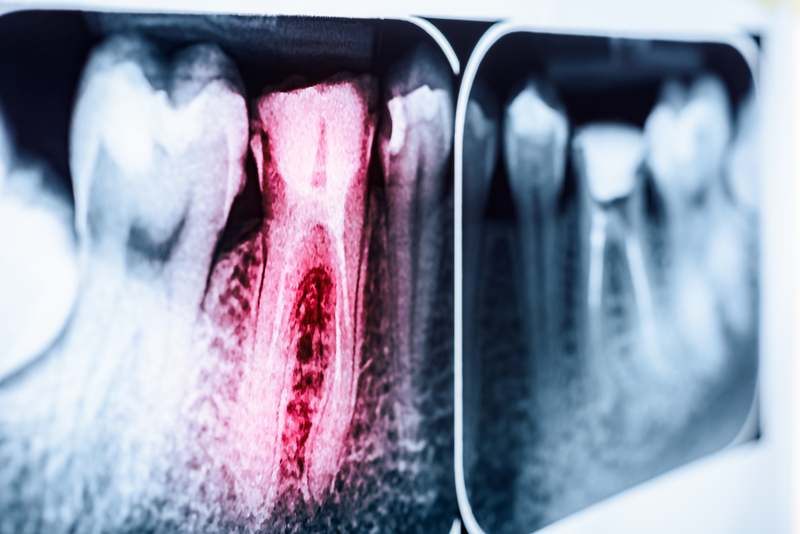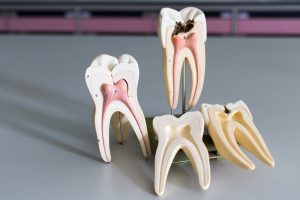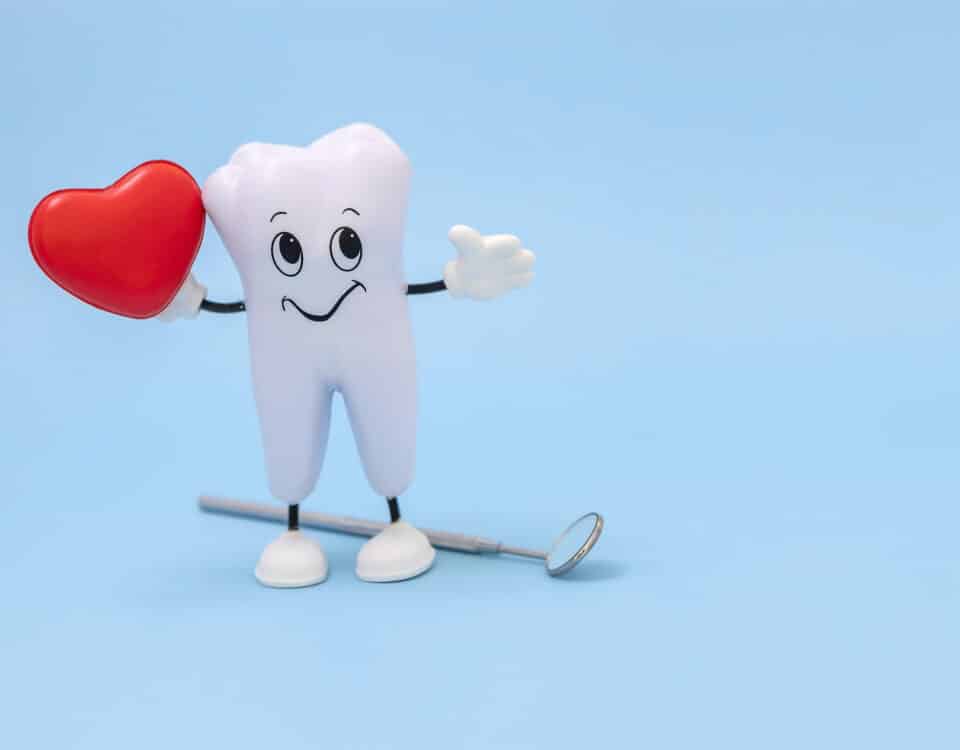Color Changes Along Your Gum Line
May 16, 2018Why Your Baby Teeth Are Important
June 5, 2018A root canal is a restorative dentistry option in which we completely clean out your tooth and its root. When that tooth decay becomes large, it can severely damage a tooth and cause an internal infection. The only way to get rid of the internal problem is to also go inside with a root canal. This may seem like a scary dental procedure, but it’s actually very straightforward and something dentists do all the time. Find out how a root canal is done, why we do them, and how one can benefit your smile if you need it!
It All Starts With Tooth Decay
If you’ve ever had a cavity, you’re not alone. Studies show that over 91% of Americans have had a cavity in their life. Many have had multiple cavities. 42% of children between 2 and 11 have tooth decay. About 26% of adults have untreated tooth decay (cavities) and children are similar in those numbers. The problem with cavities is so prevalent, that the National Institutes of Health have called tooth decay one of the most “prevalent, chronic diseases” among children and adults. But, why is tooth decay such a problem in the first place?
A cavity may seem like a small deal, but it is actually a permanent part of your tooth that has died. Your teeth can’t regenerate like other parts of your body can. So, when a tooth gets a cavity, you have to remove that permanently-damaged part of your tooth or it will keep spreading. When you eat, sugars in your foods and drinks mix with bacteria in your mouth. That mixture creates plaque, which sits on your teeth. The acidic content of plaque erodes away your hard, mineral tooth enamel, destroying it to get inside the soft, delicate center of your tooth. You always want to stop tooth decay before it happens, and especially when you only have a surface cavity instead of an internal cavity.
Why Is Your Tooth Root Important?
When plaque and bacteria get inside your tooth, it destroys tooth parts quickly. As plaque erodes your outer tooth enamel, it starts to create small cracks in your teeth, which allows it to seep inside. Your teeth are hard because they need to chew hard foods. However, they are also hard to protect your tooth root and soft, delicate center. Inside your tooth, you have blood vessels, nerves and soft tissues. When you get a toothache, it’s your tooth nerves telling you there is decay, damage or infection inside. Decay spreads rapidly because the inside is so delicate.
Your tooth roots are also important because they house tooth nerves that go throughout the tooth. Your gums protect your teeth roots and keep the teeth in place. Your teeth are actually much taller than they appear, but are simply covered up by the gums. You want them to be as well, as the tooth root is sensitive to air, heat and cold if they are exposed through injury or gum recession. Your tooth root houses very important nerves that you need, and ones that can quickly become damaged, killing your entire tooth.
What Is A Root Canal?
We mentioned that you never want a surface cavity to turn into an internal cavity. This is because you don’t want your tooth tissues or nerves to decay and die, which will happen if plaque and bacteria get to them. You can’t feel a surface cavity, but you can feel an internal cavity. Often, patients get painful toothaches that don’t go away or they have an abscess form around the tooth. Severe decay will cause pain and intense aching, so you’ll definitely want a root canal if this happens to you.
A root canal is a dental procedure that is past the stage of a dental filling, and about 15 million are done each year on Americans. Root canals fix severe decay that has damaged nerves. A dentist will do the following with your root canal treatment:
- They will see you for a dental exam and x-rays to see how large the decay is.
- The dentist will drill into the tooth to remove the infected pulp and nervous tissue inside the tooth, along with bacteria and any debris.
- Once the tooth is thoroughly cleaned and emptied of all pulp tissue through the tooth roots, the tooth will be sealed to prevent bacteria and plaque getting in again.
- You receive a dental crown after your root canal procedure is done.
Essentially, your tooth is removed of all the bad stuff inside it all the way through the root. Then it is filled up again with material that blocks anything bad from getting in again. We still keep your natural tooth (which is mostly just the outside parts of the tooth and root). Root canals can be harder on the natural teeth, which is why we always prefer to simply fix a cavity instead of having decay get to the point of needing a root canal. However, a root canal can save as much of your tooth root as possible if you have severe decay.
Help for Dental Problems
We recommend visiting the dentist often and brushing and flossing your teeth daily, several times a day. Doing so can significantly reduce your chances of tooth decay and a root canal. The American Dental Association recommends visiting the dentist at least twice a year to keep your mouth healthy. This is a time where we can perform dental x-rays to check for surface and internal dental decay. If you are getting these x-rays often, we can always catch mild decay and fix it with a simple filling. If you don’t get this service, or see the dentist, you have a higher risk for needing a root canal. Call Family & Cosmetic Dentistry of the Rockies for all of your biannual check-ups (and especially for any tooth pain) at (970) 267-0993!







